Is there any specific artist you are feeling a particular connection to? Do you ever see a portray or drawing and really feel irresistibly drawn to it? Paintings can specific one thing deep inside us that phrases can not. A chunk of art work can seize a second in time in a approach that even {a photograph} can’t. Anybody might be an artist, you don’t need to have a specific character sort, however differing kinds are inclined to want various kinds of art work. Intuitives are drawn to symbolic pictures which might be drawn from the creativeness. Sensors have a tendency to understand realism and historic art work.
It took fairly some time to compile this record of artists, however finally, I discovered a creator from every character sort. I hope taking a look at this record will encourage you to discover your artistic aspect!
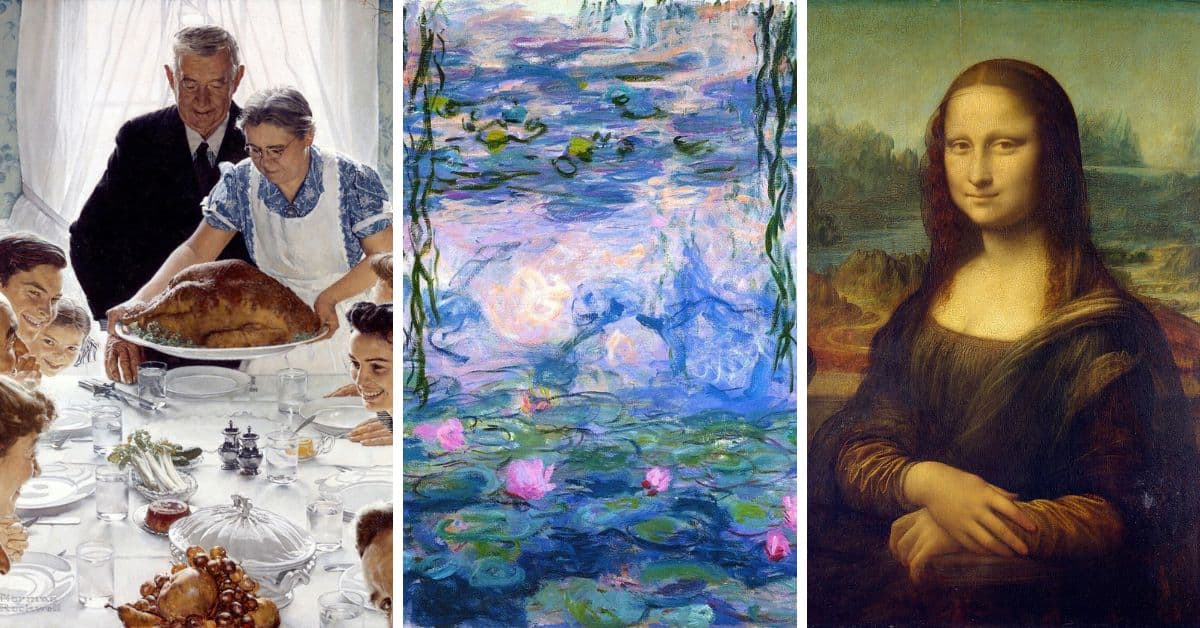
Unsure what your character sort is? Take our new character questionnaire right here. Or you may take the official MBTI® right here.
If you wish to study extra about how one can develop your artistic presents primarily based in your sort, take a look at one in every of my favourite books, Inventive You: Utilizing Your Persona Kind to Thrive
Estimated studying time: 24 minutes
ENFP – Salvador Dali
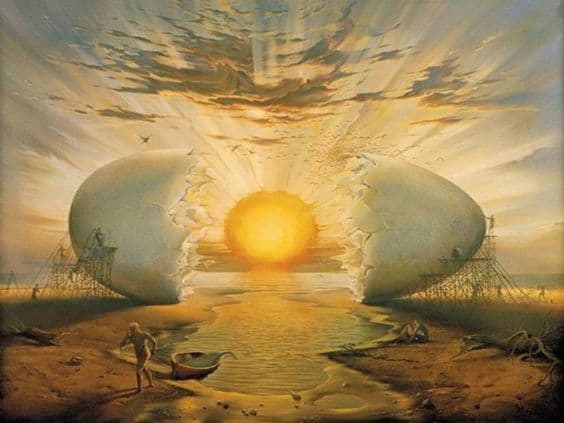

“Surrealism is harmful, however it destroys solely what it considers to be shackles limiting our imaginative and prescient.”– Salvador Dali
Salvador Dalí wasn’t simply an artist—he was the strolling embodiment of an ENFP fever dream. This man didn’t simply create surrealism; he lived it. Ever the showman, he as soon as confirmed as much as a lecture sporting a full deep-sea diving go well with (helmet and all), claiming he was about to take the viewers on a “deep dive” into the unconscious. There was only one downside—he forgot to ensure he might breathe. He needed to be rescued mid-speech when somebody frantically unscrewed his helmet with a spanner earlier than he suffocated. Basic ENFP—large imaginative and prescient, minor logistical oversight.
After which there was the time he took a Rolls-Royce Phantom II on a street journey from Spain to Paris—utterly filled with cauliflowers. Why cauliflowers? Nobody is aware of. Did it make good sense to Dalí? Completely. In the event you’ve ever had a hyperfixation that made everybody else query your sanity, congrats—you’re in good firm.
Dalí’s inventive model was as chaotic and boundless as his character. His work have been dreamscapes on acid, stuffed with melting clocks, floating eyeballs, and weird creatures. He noticed not simply what was, however what may very well be, endlessly fascinated by the layers of which means hidden beneath the floor of actuality.
Nothing was off-limits. Nothing was too bizarre. Dalí was curiosity, creativeness, and unapologetic eccentricity wrapped in a single mustachioed enigma. If ENFPs had a patron saint, it could be him—flamboyant, fearless, and at all times chasing the subsequent wild concept, regardless of how impractical, nonsensical, or cauliflower-filled it could be.
ENTP – Leonardo da Vinci
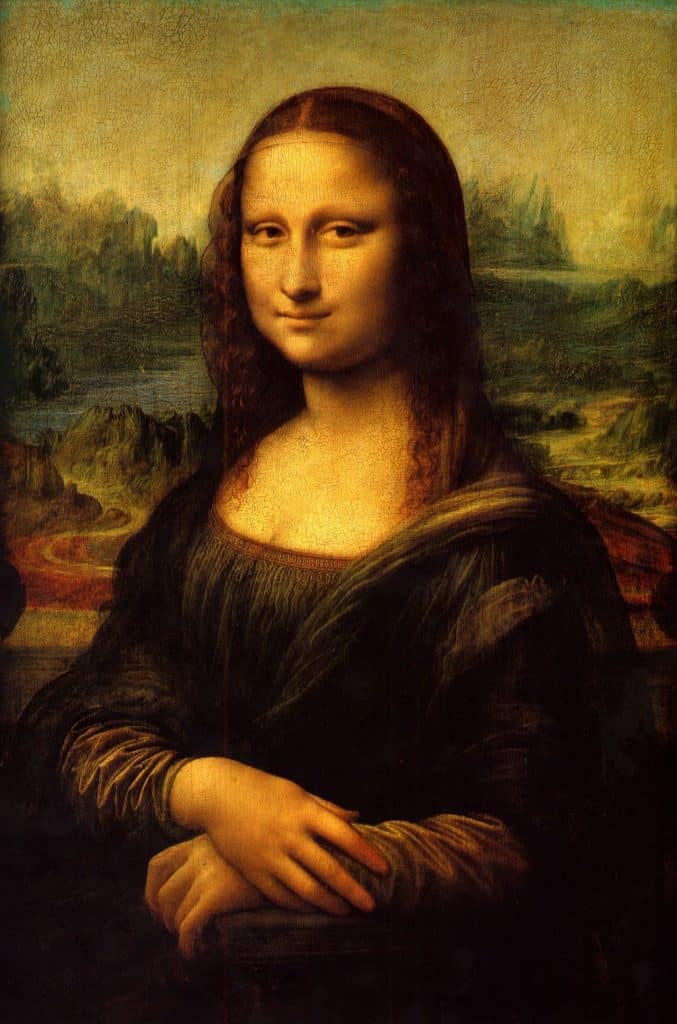

“Artwork isn’t completed, solely deserted.”– Leonardo da Vinci
Leonardo da Vinci wasn’t only a painter—he was knowledgeable overthinker with 100 completely different aspect quests. He couldn’t simply do one factor; he needed to do all the pieces. Portray, anatomy, engineering, physics, botany, cartography—if it existed, Leonardo needed to reverse-engineer it and make it higher. He was the human equal of 57 open browser tabs.
His notebooks have been stuffed with all the pieces from futuristic struggle machines (suppose: early tanks and flying machines) to scientific discoveries centuries forward of their time. He sketched the primary conceptual helicopter, designed a great metropolis (which was by no means constructed), and found out the fundamentals of blood circulation lengthy earlier than anybody else did. Oh, and he additionally crammed the margins with doodles, purchasing lists, and a disturbing variety of bizarre jokes and riddles.
And talking of his work—good luck getting him to complete one. Da Vinci was a persistent perfectionist with attention-span points. He spent 4 years on the Mona Lisa and nonetheless by no means handed it over to the consumer. As a substitute, he simply stored tinkering with it till he died, most likely whispering “only one extra layer” on his deathbed. He additionally left over 20 work unfinished, as a result of as soon as the concept was thrilling sufficient, the execution misplaced its allure.
Then there’s the truth that he was obsessive about pranks. He as soon as satisfied a patron that he might convey a lifeless lizard to life by attaching faux wings and horns to it. He beloved messing with folks and would purchase caged birds simply to set them free, as a result of why wouldn’t you try this?
Leonardo da Vinci is the final word ENTP—a stressed visionary, an mental thrill-seeker, and the man who most likely might have invented the airplane. In the event you’ve ever had a groundbreaking concept at 3 AM and deserted it by midday the subsequent day, congratulations. You and da Vinci would have gotten alongside simply effective.
INFP – Vincent Van Gogh
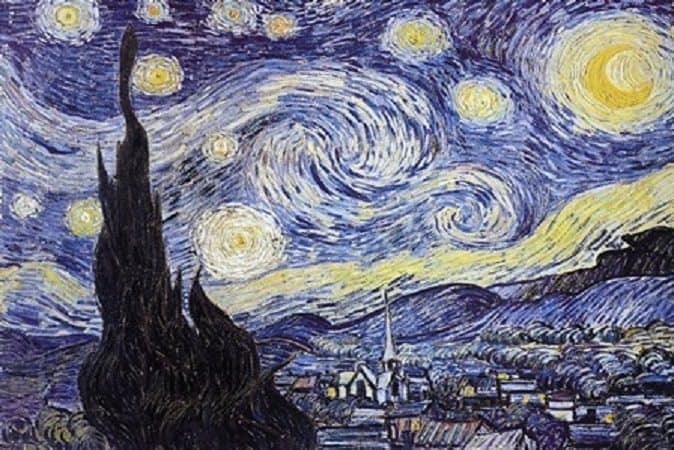

“I put my coronary heart and soul into my work, and have misplaced my thoughts within the course of.”– Vincent Van Gogh
For Van Gogh, portray was an expression of his innermost coronary heart and soul. He was a real idealist, who believed in exhibiting like to the downtrodden, sustaining his authenticity, and dwelling a life that was in accordance together with his values.
His life was marked by wrestle. He battled intense loneliness and psychological sickness, usually feeling like an outsider in a world that couldn’t fairly see what he noticed. He wrote a whole lot of letters to his brother, Theo, pouring out his hopes, doubts, and philosophical musings. He tried a number of careers—preacher, instructor, artwork seller—earlier than discovering his method to portray. However even in artwork, success eluded him. Throughout his lifetime, he bought one portray. Only one. And but, he stored portray, producing over 900 items in a single decade, pushed by a ardour that didn’t rely upon recognition.
Regardless of his struggles, van Gogh’s artwork is alive. His colours vibrate, his skies swirl, his fields glow with emotion. He took the ache of his existence and turned it into one thing timeless, one thing that also reaches into folks’s souls over a century later. If there’s one factor INFPs perceive, it’s the stress between deep feeling and a world that doesn’t at all times get it. Van Gogh lived in that house—and thru his artwork, he discovered a method to bridge it.
INTP – J.M.W Turner
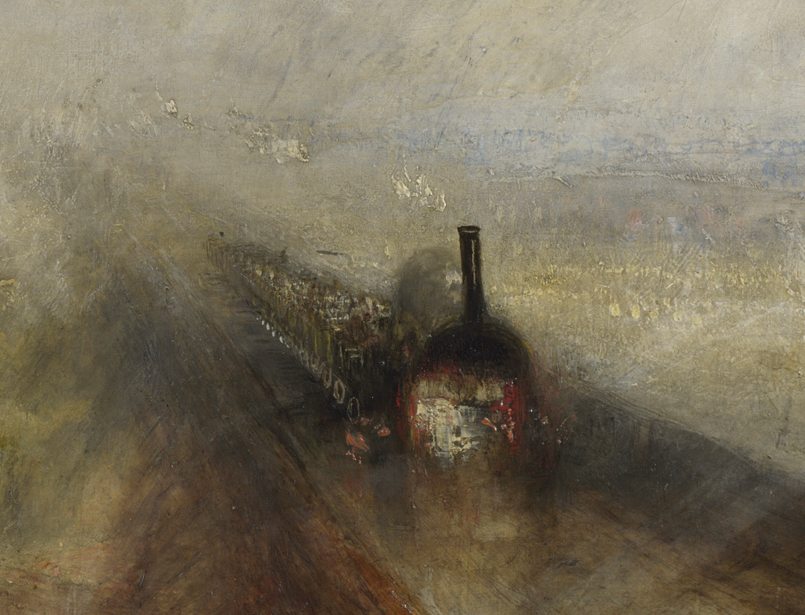

“If I might discover something blacker than black, I’d use it.”– J.M.W. Turner
J.M.W. Turner was a shy tutorial who had an unconventional type of artistry. He didn’t care about custom, guidelines, or making issues look good. He cared about exploration—of kind, motion, and the uncooked, untamed forces of nature. Whereas different artists fastidiously deliberate their compositions, Turner would typically arrive at exhibitions with clean canvases, solely to color them on the spot whereas the viewers watched. He labored in bursts of chaotic genius, layering colour after colour till a imaginative and prescient emerged—a course of that, to outsiders, seemed utterly unhinged however was truly a masterclass in instinct and experimentation.
Socially, Turner was as elusive as his misty seascapes. He was socially awkward, eccentric, and notoriously tough to get near. He not often defined his work, preferring to let folks determine it out themselves. His work weren’t about accuracy or effective particulars; they have been about impressions—the way in which a storm felt, the way in which mild danced on water, the way in which the world blurred whenever you checked out it by way of a haze of rain and wind. His use of colour was revolutionary, usually pushing into abstraction lengthy earlier than anybody else dared to. Critics thought he was shedding his grip. In actuality, he was simply forward of his time.
Like a real INTP, Turner labored on his personal wavelength, utterly tired of whether or not folks “bought” him or not. He painted as a result of he needed to—as a result of his thoughts was filled with shifting concepts and fragmented pictures that solely made sense as soon as they hit the canvas. Whereas the world tried to categorize and analyze him, Turner remained in his personal cerebral storm, chasing the ever-elusive good shade of black.
ENFJ – Henri Matisse
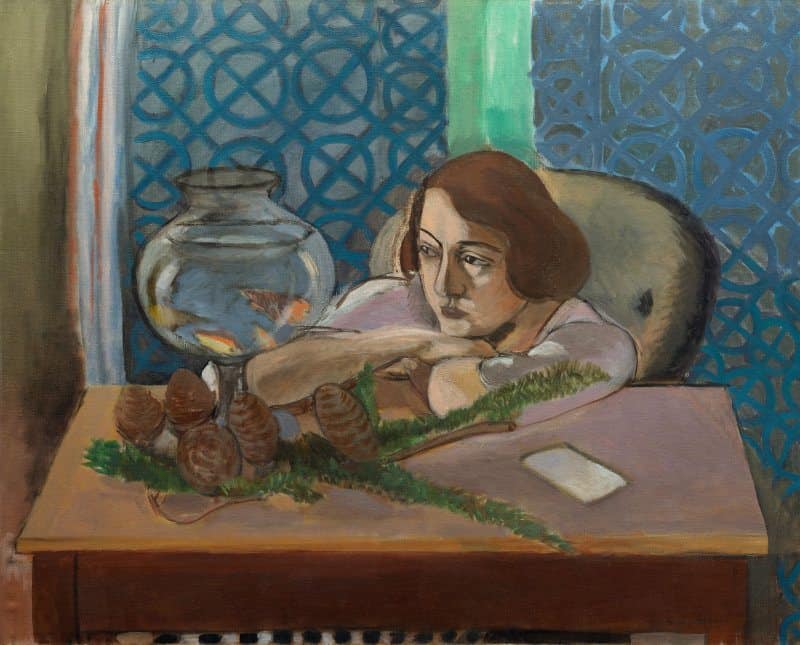

“What I dream of is an artwork of stability, of purity and serenity devoid of troubling or miserable subject material – a soothing, calming affect of the thoughts, fairly like a great armchair which supplies leisure from bodily fatigue.”– Henri Matisse
Henri Matisse didn’t simply paint—he impressed. His artwork wasn’t as a lot about precision or technical perfection; it was about emotion, connection, and the vitality between folks. He had this uncommon means to see past the floor, drawing out the essence of his topics fairly than simply their options. Earlier than portray somebody, he would ask them to think about themselves contained in the scene, to really feel the colours, the motion, the ambiance.
His work radiate a sense of heat, concord, and life, bursting with daring colours and flowing types. Even when he confronted private hardships—like shedding his mobility as a result of sickness—he didn’t retreat into darkness. As a substitute, he tailored, turning to cut-paper collages, creating works so filled with pleasure and vitality that you simply’d by no means guess they have been made by a person confined to a wheelchair. That’s Matisse in a nutshell: an everlasting optimist, at all times centered on chance, at all times bringing mild even in problem.
Like a real ENFJ, Matisse’s imaginative and prescient prolonged past himself. He needed his artwork to uplift, to assuage, to make folks really feel one thing good. He believed in stability, not simply in composition however in life—artwork as a supply of peace, colour as a language, magnificence as a sort of emotional nourishment.
ENTJ – Claude Monet
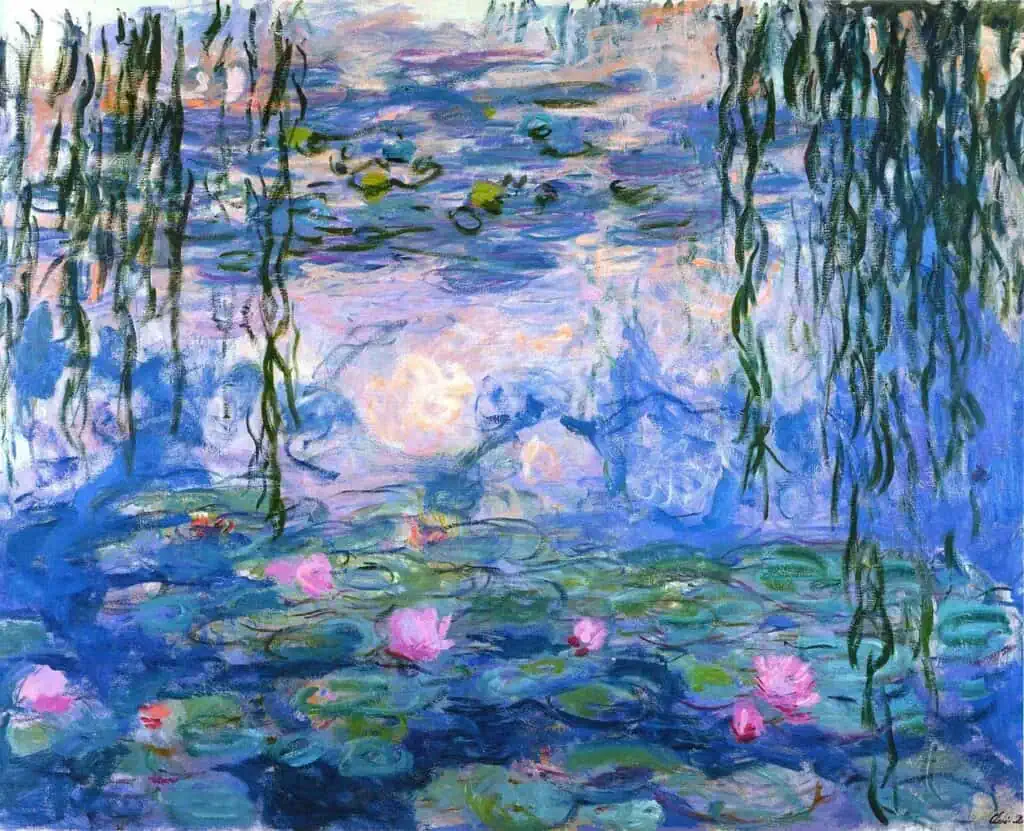

“I put on myself out and wrestle with the solar. And what a solar right here! It might be crucial to color right here with gold and gems. It’s fantastic.”– Claude Monet
Claude Monet might have painted serene water lilies, however he himself was a storm. Neglect the picture of a delicate, nature-loving artist—Monet was a drive of will, a person who lived just for his imaginative and prescient, and who had zero endurance for something that bought in his approach. He was fiercely bold, relentlessly aggressive, and, by all accounts, extraordinarily tough to be round. Even in his small city of Giverny, he was seen as intimidating, preferring the corporate of equally temperamental associates like Georges Clemenceau and Auguste Rodin. Monet wasn’t simply devoted to his artwork—he was obsessive about it, typically to the detriment of his relationships.
Whilst a baby, Monet’s rebellious streak was simple. As a substitute of paying consideration in class, he spent his time doodling caricatures in his notebooks, a lot to his father’s frustration. (In the event you’ve ever gotten in bother for drawing at school, congratulations—you and Monet have one thing in widespread.) However it wasn’t all wasted time—his inventive expertise caught the attention of Eugène Boudin, who took younger Monet exterior to color by the ocean, introducing him to the light-filled brushstrokes that might later outline his work. Monet admired him a lot that he as soon as stated, “Eugène Boudin is the one man I do know who caresses clouds the way in which you caress the shoulder of your mistress.”
Regardless of his mood and selfishness, Monet wasn’t a complete recluse. He had a tight-knit circle of associates and was recognized for his legendary lunch desk, the place he entertained with good meals and dialog. However make no mistake—Monet’s true ardour, his true obsession, was portray. He labored tirelessly, pushing inventive boundaries, capturing mild in methods nobody had earlier than, and ignoring each rule that attempted to comprise him. He was an ENTJ by way of and thru—unyielding, strategic, and fully dedicated to his personal imaginative and prescient of success.
INFJ – Odilon Redon
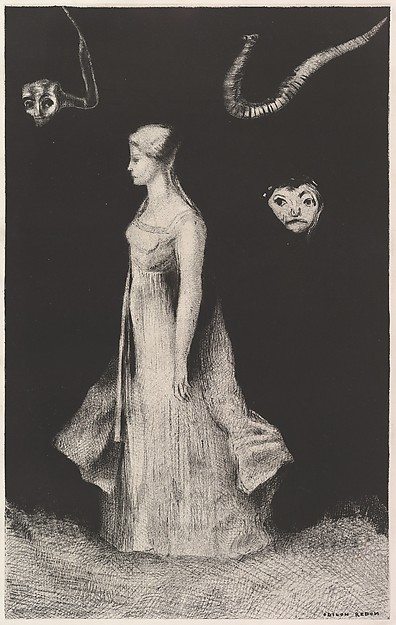

“Nothing in artwork is achieved by will alone. It’s achieved by docilely submitting to the unconscious.”– Odilon Redon
Odilon Redon didn’t simply paint—he channeled. His artwork got here straight from the depths of his thoughts, stuffed with shadowy dreamscapes, floating heads, and eerie, symbolic figures that appeared to whisper secrets and techniques from one other realm. He wasn’t curious about merely replicating the world round him—he needed to transcend it, to disclose one thing deeper, one thing unseen. His work was summary, introspective, and layered with which means that only some will absolutely perceive.
Like many INFJs, Redon was deeply personal, a person of quiet melancholy and deep reflection. He spent a lot of his life in solitude, preferring the corporate of his ideas to the noise of the skin world. He believed in artwork as a type of interior exploration, a method to entry larger states of consciousness and pull one thing mystical into actuality. His fascination with the unconscious led him to create works that really feel like visions—half-formed ideas, symbols hovering on the sting of understanding, inviting viewers to interpret them in their very own approach.
Although reserved, Redon was recognized for his kindness and depth of emotion. He understood human complexity and infused that understanding into his artwork, creating items that resonate on an nearly non secular stage. Like many INFJs, he was each idealistic and melancholic, trying to find which means past the unusual, in search of connection in a world that usually felt isolating. His work stands as a testomony to the INFJ’s means to see past the floor, to seize the intangible, and to convey one thing profoundly otherworldly into being.
INTJ – Arnold Böcklin
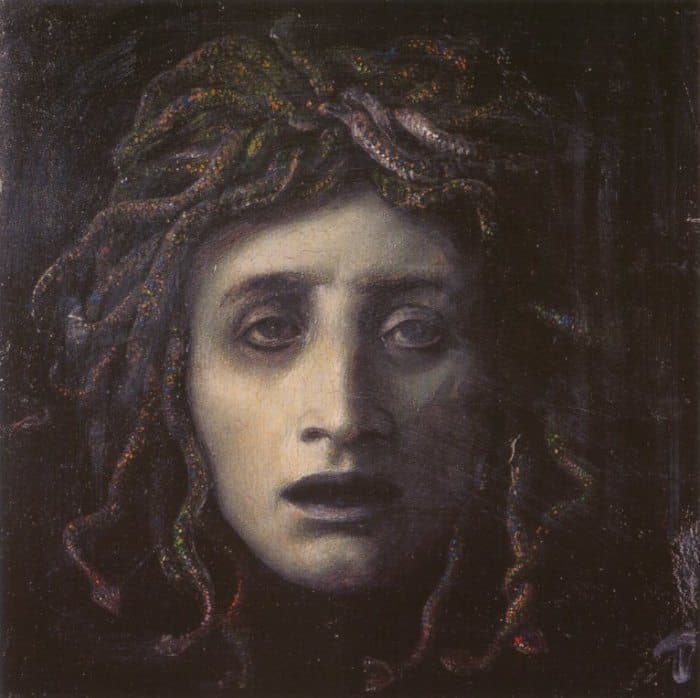

“With out untiring diligence, single-mindedness and a combative spirit, there can’t be any good end result.” – Arnold Bocklin
Arnold Böcklin wasn’t simply portray—he was setting up worlds. His works weren’t meant to be glanced at; they have been meant to tug you in, to make you suppose. A grasp of symbolism and eerie magnificence, Böcklin crammed his canvases with darkish mythological landscapes, ghostly figures, and visions that appeared to belong to a different actuality altogether. His most well-known portray, Isle of the Useless, is the very definition of an INTJ’s mindscape—moody, mysterious, and filled with which means that solely probably the most perceptive will absolutely grasp.
In contrast to artists who painted fleeting moments or on a regular basis life, Böcklin was obsessive about the grand and the everlasting—loss of life, mythology, and the forces that form existence. He rejected conventional realism in favor of deep, intentional symbolism, creating each bit with a spotlight and precision that gave his work a brooding, nearly architectural high quality. His work really feel like riddles, designed for these with the endurance and mind to unravel them. In the event you’ve ever felt annoyed that individuals don’t see all of the layers of depth in your work or concepts, Böcklin would perceive.
True to his INTJ nature, Böcklin was intense, personal, and extremely self-directed. He didn’t chase reputation or cater to developments—he painted as a result of he had a imaginative and prescient, and that imaginative and prescient demanded to be realized. His legacy, very like that of many INTJs, is one in every of strategic brilliance—uncompromising, thought-provoking, and constructed to face the check of time.
ESFJ – George Hughes
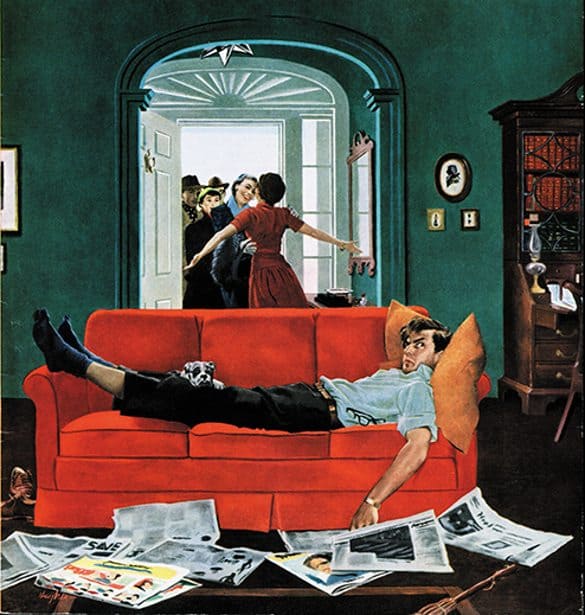

George Hughes didn’t simply paint footage—he captured moments. His art work was a snapshot of mid-century American life, stuffed with bustling households, neighborhood gossip, and the quiet joys of on a regular basis routine. He understood folks—not simply how they seemed, however how they felt. That’s why, at the same time as images took over journal covers, Hughes’ work nonetheless had a spot. Images confirmed actuality; Hughes painted connection.
Born in New York Metropolis, Hughes was on the coronary heart of twentieth-century artwork and promoting. He skilled on the Nationwide Academy of Design and the Artwork College students’ League earlier than freelancing for Self-importance Honest and Home and Backyard. A quick stint within the automotive business pulled him to Detroit, the place he labored as a mechanical designer—till he realized he hated it. He dropped all the pieces and moved again to New York, the place he constructed a reputation for himself in industrial illustration, finally catching the eye of The Saturday Night Put up.
His work was all about neighborhood. When he and his spouse, Casey, moved to Arlington, Vermont, they positioned themselves in the midst of a rising artist hub—proper alongside Norman Rockwell. (That they had a working joke the place Rockwell would ask for Hughes’ opinion on a sketch after which do the precise reverse.) Hughes painted 115 Put up covers, alongside illustrations for McCall’s, Girl’s Day, Reader’s Digest, and extra. Even because the world shifted to images, Hughes tailored, later turning into a profitable portrait artist. His work remains to be displayed in locations like The Detroit Museum, the Pennsylvania Academy of Wonderful Artwork, and the Artwork Institute of Chicago.
ESTJ – Emanuel Leutze
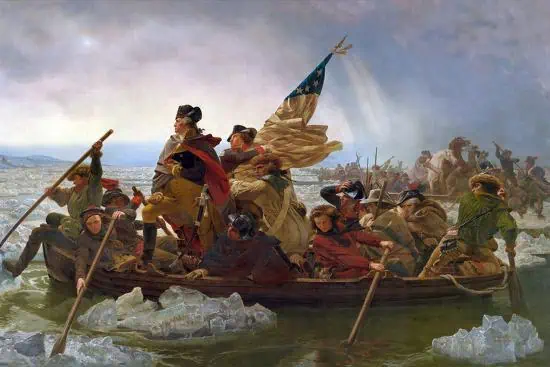

Emanuel Leutze’s most well-known work, Washington Crossing the Delaware, is burned into American consciousness, however the man behind the comb was simply as daring and decided because the scene he created. A German-born immigrant who noticed America as a logo of progress and power, Leutze approached portray with cautious precision however relentless drive. His work was not nearly aesthetics—it was about legacy, patriotism, and making an influence.
Leutze began younger. After shedding his father, he started promoting work at 14 to assist himself. He was bold and pragmatic, getting into exhibitions, securing commissions, and climbing the inventive ranks with relentless dedication. His early work led him to Washington, D.C., the place he deliberate to color portraits of political leaders—however the monetary crash of 1837 derailed his plans. Did he quit? No. He pivoted, refined his abilities, and finally discovered himself in Germany’s Dusseldorf Artwork Academy, one of the crucial prestigious establishments of its time. There, he painted large, theatrical works glorifying American historical past, positioning himself not simply as an artist however as a cultural architect shaping how the nation noticed itself.
His profession was marked by self-discipline, management, and a agency dedication to his beliefs—quintessential ESTJ traits. Even after a studio hearth destroyed his first model of Washington Crossing the Delaware, he painted one other, greater and higher than earlier than. Congress took discover, commissioning him to color a grand mural, Westward the Course of Empire Takes Its Approach, within the U.S. Capitol. His affect stretched past his work; even with out holding an official instructing place, he formed the inventive neighborhood in each Germany and the U.S., forsaking a legacy of construction, self-discipline, and nationwide delight.
ESFP – Frederic Remington


“Artwork is a she-devil of a mistress, and if at instances in earlier days she wouldn’t even stoop to my mind-set, I’ve persevered and can so proceed.”– Frederic Remington
Frederic Remington wasn’t simply an artist—he was a storyteller with a paintbrush, capturing the untamed vitality of the Wild West in daring, action-packed strokes. His work weren’t nonetheless; they moved. Horses reared, cowboys charged, mud swirled. He wasn’t content material to sit down in a studio and picture the frontier—he lived it. Looking, using, tenting—he did all of it, immersing himself within the rugged world he beloved to depict.
A real ESFP, Remington was all about expertise, journey, and enjoyable. He had an easygoing allure, a pointy humorousness, and a knack for making folks snigger—whether or not by way of his full of life storytelling or his hilarious caricatures of classmates. Formal schooling? Not likely his factor. He realized by doing, sketching troopers, cowboys, and outlaws of their component, bringing the uncooked vitality of the frontier to life. Even his athleticism bled into his work—his ardour for soccer and boxing fueled his dynamic, high-energy compositions.
Remington is the final word instance of an ESFP artist—daring, adventurous, and irresistibly drawn to the fun of the second. His artwork doesn’t simply present the Wild West—it throws you into it.
ESTP – John James Audubon
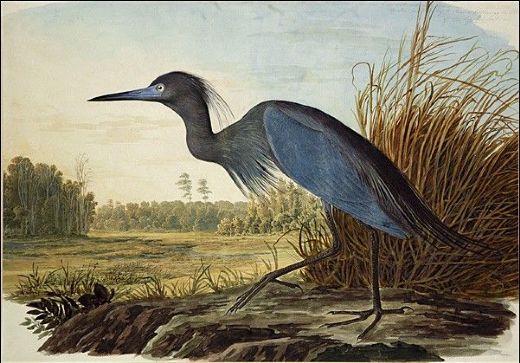

“Looking, fishing, drawing, and music occupied my each second. Cares I knew not, and cared naught about them.”– John James Audubon
If there was ever an artist who lived his subject material, it was John James Audubon. He didn’t sit in a comfy studio portray birds from secondhand accounts—he chased them by way of the wilderness, gun in a single hand, sketchbook within the different. He needed to see them, maintain them, perceive them of their pure surroundings. And if that meant trekking by way of swamps, climbing bushes, or sleeping beneath the celebs? Even higher. Audubon wasn’t simply an artist; he was an explorer, a hustler, and a storyteller—pure ESTP vitality.
His life was a collection of daring strikes and reinventions. Born in what’s now Haiti, despatched to France as a baby, and shipped off to America to dodge Napoleon’s draft, he tailored to no matter life threw at him. He ran companies, went bankrupt, hung out in jail, after which reinvented himself as the best fowl artist of his time. When he got down to create The Birds of America, he had no cash, no assured viewers, and no formal scientific coaching—simply uncooked expertise, charisma, and the sheer nerve to make it occur. And it labored. He charmed and impressed the British elite, securing funding to publish his 435 life-sized fowl portraits, which stay among the most detailed and beautiful wildlife illustrations ever made.
Audubon had zero endurance for idea with out motion. He didn’t simply paint birds—he banded them to trace migration patterns, an experiment that was groundbreaking for its time. He traveled always, bought his artwork with the boldness of a seasoned salesman, and informed wildly exaggerated tales about his adventures, leaning into his personal legend. He was a survivor, a risk-taker, and, for higher or worse, a person who did no matter it took to succeed. Like many ESTPs, he was sensible, adaptable, and greater than a little bit reckless—a person whose legacy is as sophisticated and dynamic because the life he led.
ISFP – Winslow Homer
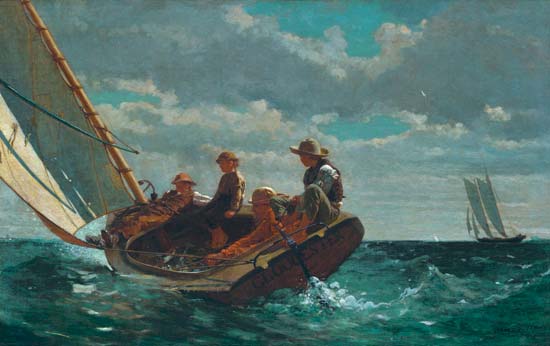

“The life that I’ve chosen offers me my full hours of enjoyment for the stability of my life: the solar won’t rise, or set, with out my discover and thanks.”– Winslow Homer
Winslow Homer wasn’t a person of phrases—he let his work do the speaking. You possibly can nearly hear the crash of the waves, really feel the chilly spray of salt water, sense the silent anticipation of the ladies standing on the shore, ready for his or her husbands to return. Homer didn’t deal in grand historic moments—he centered on the true, the uncooked, and the unstated. He painted life because it was, stripped of artifice, revealing each its quiet magnificence and its brutal indifference.
In contrast to many artists of his time, Homer wasn’t drawn to crowded salons or mental debates—he needed solitude. He spent years portray the ocean, the wilderness, and the individuals who lived on the mercy of each. His finest works weren’t about politics or social commentary—they have been about emotion and expertise. Whether or not it was the quiet struggles of girls on the shore, the fierce battle of males towards the ocean, or the fleeting pleasure of kids at play, Homer painted with an instinctive, sensory-driven consciousness. He wasn’t curious about large, theoretical narratives—he was curious about moments.
His later life was spent in near-total isolation in Prouts Neck, Maine, the place he painted a few of his most intense and atmospheric seascapes. By then, he had deserted any want to clarify himself. His work turned extra summary, extra elemental—simply water, mild, and motion, uncooked and untamed. Homer was an ISFP by way of and thru—deeply attuned to the world round him, guided by feeling over idea, and dedicated to creating artwork that wasn’t simply seen, however felt.
ISTP – Georgia O’Keeffe
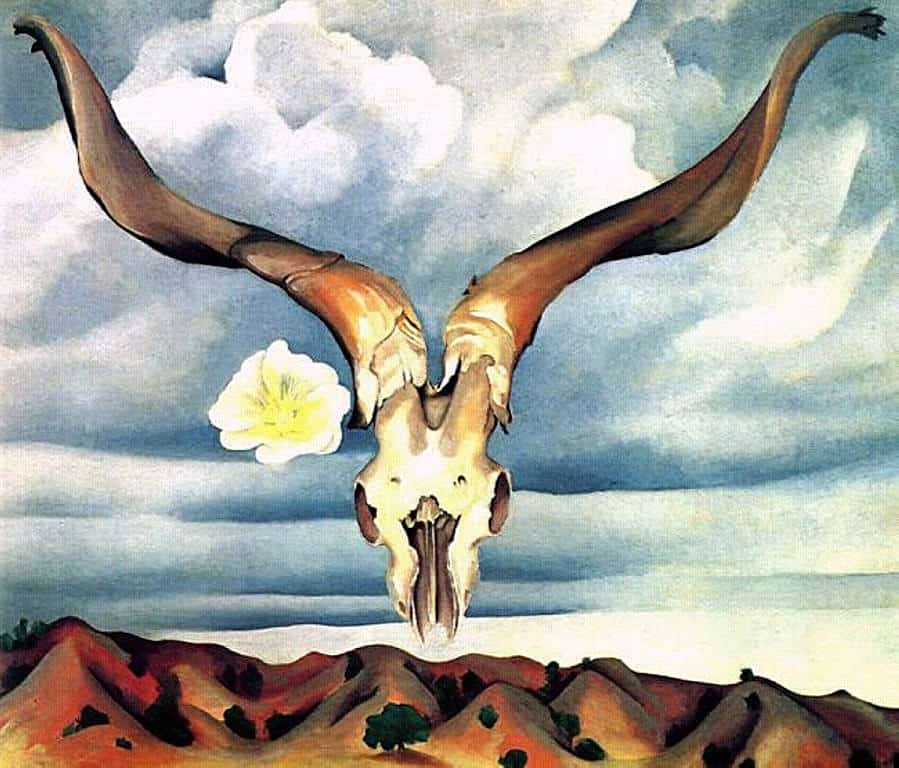

“I don’t very a lot take pleasure in taking a look at work normally. I do know an excessive amount of about them. I take them aside.”– Georgia O’Keeffe
Georgia O’Keeffe wasn’t curious about what folks thought of her artwork—she was curious about the right way to make it. She wasn’t creating large feelings; she was exact, unsentimental, and utterly hands-on. Her work—whether or not of flowers, bones, or skyscrapers—weren’t nearly what she noticed however about how she might seize kind, colour, and composition within the boldest approach potential. Folks needed her to be poetic about her flower work, however O’Keeffe famously shut that down, saying, “I hate flowers—I paint them as a result of they’re cheaper than fashions and so they don’t transfer.”
Her inventive course of was hers, and she or he didn’t want anybody else’s validation. From a younger age, O’Keeffe was impartial and decided to carve her personal path. She studied conventional methods on the Artwork Institute of Chicago however rapidly turned extra curious about experimenting than in following conference. When Alfred Stieglitz, a well known photographer and artwork seller, noticed her work, he was so captivated that he put it in a gallery with out even asking her first. She wasn’t thrilled about that, however it launched her profession, and she or he took full management of it from there.
O’Keeffe’s life was one in every of self-sufficiency and quiet defiance. She craved solitude, shifting to New Mexico to reside and work on her personal phrases, far-off from the New York artwork scene. She discovered inspiration within the huge landscapes, bones, and skies, lowering all the pieces to its rawest, most important kind. Whilst her eyesight failed in her later years, she refused to cease creating, discovering new methods to work with assistants and adapt to her altering talents.
ISFJ – Norman Rockwell


“I speak as I sketch, too, with a purpose to maintain their minds off what I’m doing so I’ll get probably the most pure expression I can from them. Additionally, the speaking helps to dimension up the topic’s character, so I can determine higher the right way to painting him.”– Norman Rockwell
Norman Rockwell preserved small-town America, one cautious brushstroke at a time. His work was concerning the moments that made life really feel heat, acquainted, and human. The delicate approach a father helped his son tie a tie, the nervous pleasure of a boy getting his first haircut, the quiet resilience within the eyes of an aged lady saying grace—Rockwell noticed this stuff when others neglected them. He was an observer, a storyteller, and a perfectionist, capturing not simply how folks seemed, however how they felt.
Rockwell’s success wasn’t the results of daring riot or avant-garde experimentation—it was the product of self-discipline, consistency, and a agency dedication to his craft. By 16, he was already working as an illustrator. At 22, he painted his first Saturday Night Put up cowl. Over the subsequent 47 years, he would paint 321 extra, every one fastidiously composed to replicate the values, heat, and quiet humor of on a regular basis life. He spent hours perfecting expressions, adjusting physique language, and remodeling particulars till all the pieces felt actual. His artwork wasn’t about exaggeration—it was about fact, about capturing what made folks folks. The great thing about the moments he captured actually converse to the ISFJ’s approach of discovering which means and significance within the small particulars that others overlook.
True to his ISFJ nature, Rockwell most popular to remain behind the scenes, expressing his values by way of his work fairly than grand gestures. Although he was recognized for lighthearted, nostalgic imagery, he additionally took on socially vital themes later in life, portray civil rights struggles, poverty, and house exploration. Even because the artwork world shifted towards abstraction and modernism, Rockwell remained true to himself, proving that typically, probably the most highly effective artwork isn’t the loudest—it’s the sort that makes folks really feel at house.
ISTJ – Edward Hopper
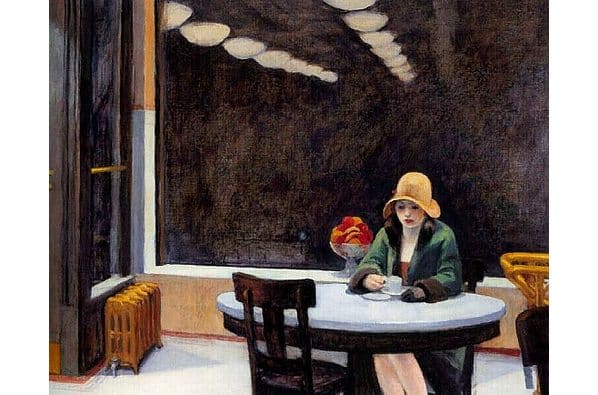

“My goal in portray has at all times been probably the most actual transcription potential of my most intimate impression of nature.”– Edward Hopper
Edward Hopper didn’t paint noise, chaos, or grand shows—he painted silence. His artwork wasn’t about motion, however about stillness, concerning the moments in life when nothing is occurring—and but, one thing is. His work captured loneliness, isolation, and quiet remark, usually exhibiting solitary figures misplaced in thought, distant from one another even when sitting aspect by aspect.
In contrast to lots of his contemporaries, Hopper had zero curiosity in developments or self-promotion. He labored slowly and methodically, perfecting each element earlier than shifting ahead. His compositions have been structured, exact, and thoroughly deliberate, capturing an nearly photographic realism whereas nonetheless sustaining a way of detachment. When commissioned for a Napoleonic struggle poster, he painted the troopers in traditionally correct French uniforms—solely to be informed to vary them to one thing extra interesting to an American viewers. He refused. Authenticity mattered greater than reputation. That is true ISTJ kind. They hate something that’s phony, manipulative, or cloying.
Although he misplaced important favor as Summary Expressionism took over within the mid-Twentieth century, Hopper didn’t care. He stored portray the identical themes, the identical stark cityscapes, the identical quiet stress between folks and progress. His most well-known work, Nighthawks, is about current in an area and feeling the burden of it. He had no real interest in psychoanalyzing his personal work or chasing inventive actions. His model remained uncompromising, regular, and deliberate, identical to the person himself.
What Do You Assume?
Do you may have a favourite artist on this record? Do you may have a favourite artist that you simply’d like so as to add? Let me know within the feedback?!
Discover out extra about your character sort in our eBooks, Discovering You: Unlocking the Energy of Persona Kind, The INFJ – Understanding the Mystic, The INTJ – Understanding the Strategist, and The INFP – Understanding the Dreamer. You may also join with me through Fb, Instagram, or YouTube!


This text incorporates affiliate hyperlinks. I solely suggest merchandise I actually consider in.
Different Articles You Would possibly Get pleasure from:


In the case of character sort, more often than not I attempt to write concerning the potential and constructive traits of every particular person. Nonetheless, there are wholesome and unhealthy variations…


Criticism might be powerful for anybody, I do know I’m personally not an enormous fan. Who likes to be informed they’ve achieved one thing flawed or failed? But whereas all of us…


Wanting so as to add some magic to your summer time? Opening a ebook can transport you to a different world, an journey, a thriller, or it will probably merely offer you some good stomach…
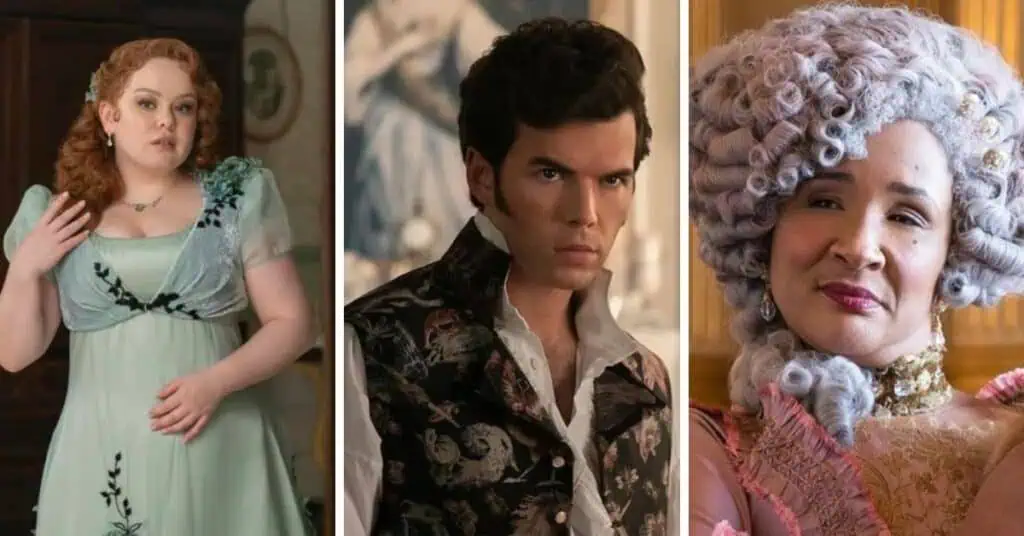

I really like a great romance, and the Bridgerton collection is one which, though a responsible pleasure, I’ve totally loved. Upon watching the third season I made a decision it could be…


Do you ever really feel such as you’re talking a distinct emotional language than the folks round you? Do you ever want your accomplice or buddy have been extra vocal about how they…


I not too long ago noticed an article on-line that made an inventory of probably the most to least assured character varieties. On-line you’ll see many articles saying that one sort “is” one thing or…
Sources:
Inventive You: Utilizing Your Persona Kind to Thrive
Lives of the Artists: Masterpieces, Messes (and what the neighbors thought!)
Biography.com – Artists










